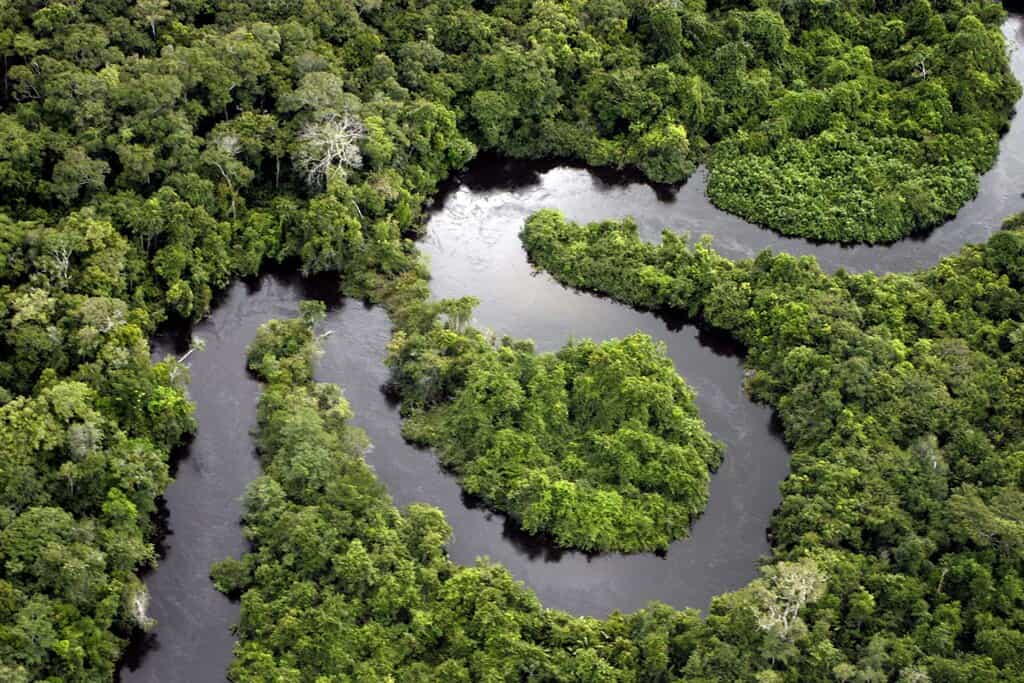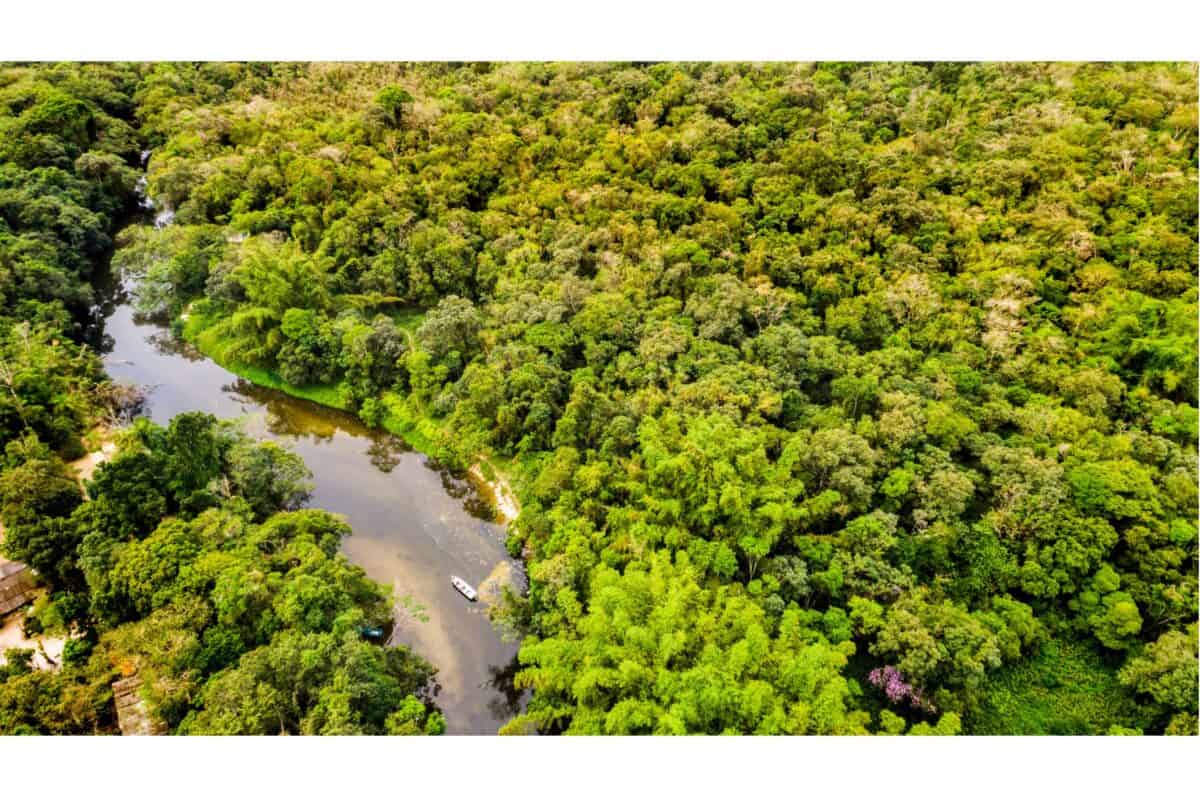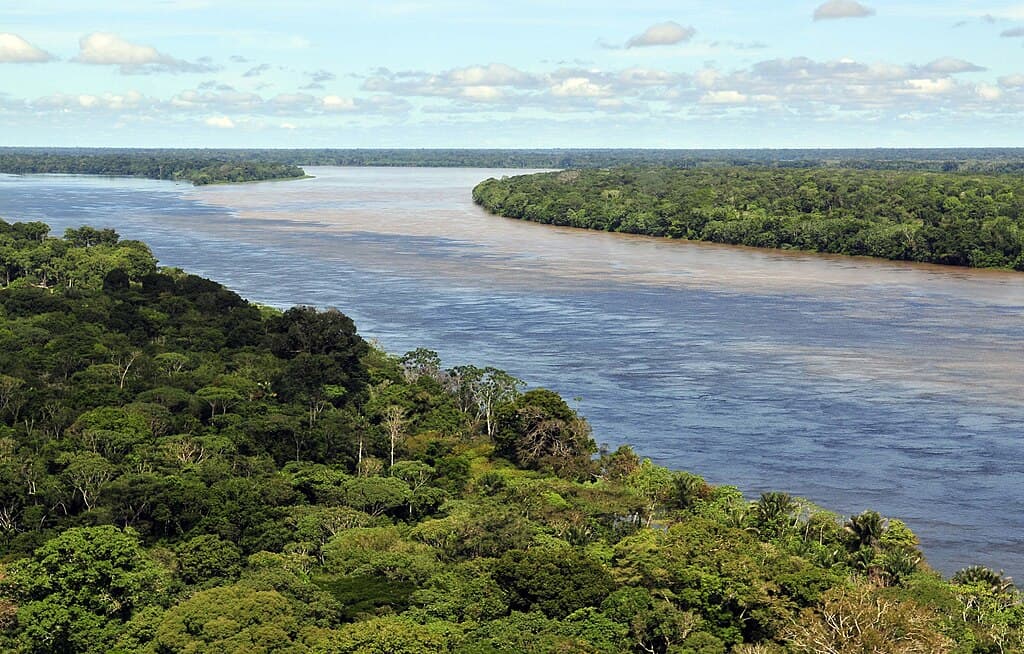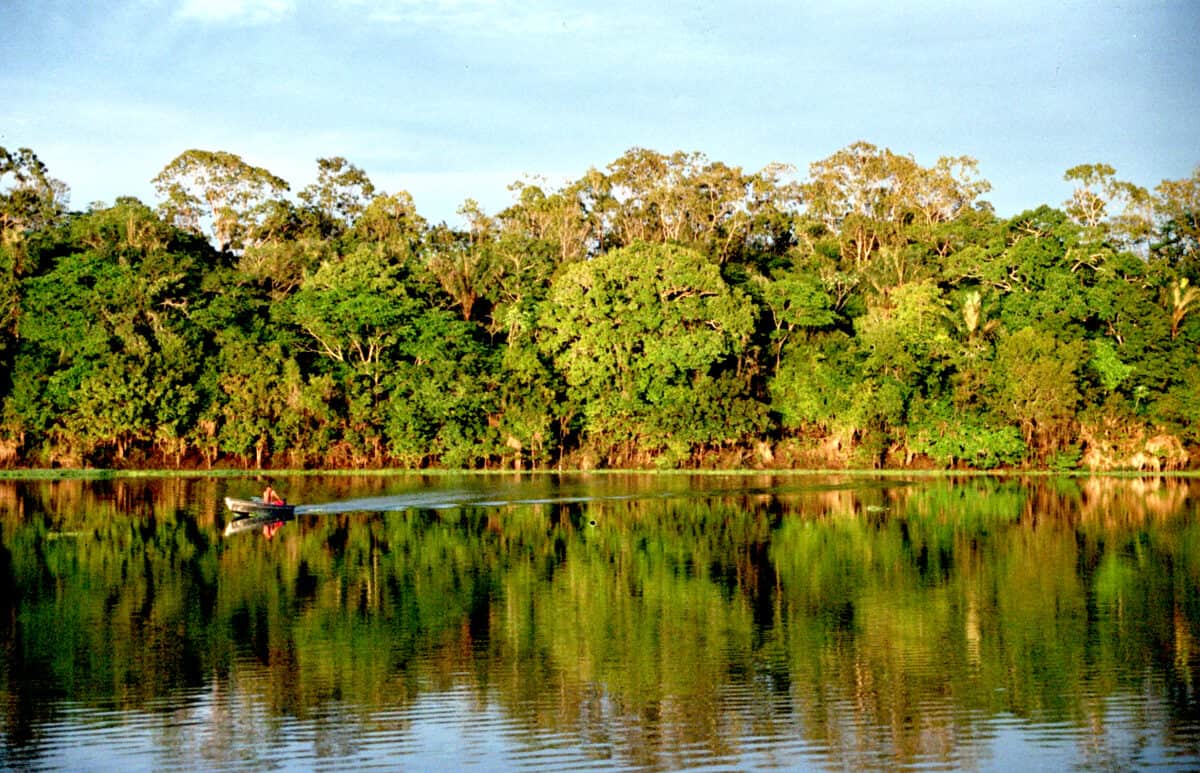The Amazon rainforest, often called the “lungs of the Earth,” extends across nine South American countries and covers approximately 2.7 million square miles. This vast ecosystem not only supports incredible biodiversity but also plays a crucial role in global climate regulation. While thousands of miles separate the Amazon from the United States, emerging research suggests that the health and integrity of this tropical forest directly influence weather patterns across North America, including the United States.
From rainfall distribution to hurricane formation and even snowfall in the Midwest, the Amazon’s influence reaches far beyond its geographical boundaries. As deforestation rates increase and climate change accelerates, understanding these complex interconnections becomes increasingly important for predicting and preparing for future weather patterns in the United States.
The Amazon’s Role as a Climate Engine

The Amazon rainforest functions as a massive climate engine, generating its own weather systems and influencing global atmospheric circulation. Each day, a single large tree in the Amazon can transpire up to 1,000 liters of water into the atmosphere. Collectively, the entire rainforest releases approximately 20 billion tons of moisture into the air daily.
This process creates what scientists call “flying rivers” – massive air currents loaded with water vapor that travel across South America and beyond. These atmospheric rivers carry more water than the Amazon River itself and play a crucial role in distributing rainfall across the continent and into the Northern Hemisphere, including parts of the United States.
Teleconnections: Long-Distance Climate Relationships

The scientific concept of “teleconnections” helps explain how changes in one region’s climate can affect weather patterns in distant areas. Teleconnections work through atmospheric waves and ocean currents that transfer energy and moisture across vast distances. The Amazon rainforest creates teleconnections with North America through several mechanisms.
When vegetation in the Amazon transpires moisture, it releases latent heat that alters air pressure systems and jet stream patterns. These altered patterns can travel thousands of miles, affecting temperature and precipitation in the United States. Research published in the Journal of Climate has demonstrated that these teleconnections between the Amazon and North America are strongest during winter and spring months when the jet stream is most active.
Impact on Rainfall Patterns Across the U.S.

Studies conducted by researchers at Princeton University and the University of California have found that Amazon deforestation could reduce rainfall in the U.S. Northwest by up to 20% and affect precipitation patterns across the Mississippi River Basin. The mechanism works through atmospheric bridges – when the Amazon loses trees, less moisture enters the atmosphere, altering how air masses move and where they deposit precipitation.
Computer models suggest that continued deforestation at current rates could lead to drier conditions in California, the Pacific Northwest, and parts of the Midwest. Conversely, some southern states might experience increased rainfall as weather patterns shift. These changing rainfall patterns could significantly impact American agriculture, water resources, and infrastructure planning.
Influence on Hurricane Formation and Intensity

The Amazon rainforest plays a substantial role in hurricane formation and development that affects the United States’ eastern and gulf coasts. As moisture evaporates from the Amazon and moves northward, it contributes to the atmospheric conditions necessary for hurricane development in the Atlantic Ocean.
Research from the National Oceanic and Atmospheric Administration (NOAA) indicates that years with healthier Amazon vegetation correlate with more active hurricane seasons. The forest’s evapotranspiration affects sea surface temperatures and wind patterns over the Atlantic, influencing both hurricane frequency and intensity. Some climate models suggest that a 40% loss of Amazon rainforest could increase the number of hurricanes making landfall in the southeastern United States by approximately 15% by the end of the century.
The Amazon’s Carbon Sink and U.S. Temperature Regulation

As one of Earth’s largest carbon sinks, the Amazon rainforest absorbs approximately 2.2 billion tons of carbon dioxide annually, helping to regulate global temperatures. When deforestation occurs, this carbon storage capacity diminishes, allowing more greenhouse gases to remain in the atmosphere. Scientists at Colorado State University have demonstrated that this increased carbon concentration can alter jet stream patterns that directly affect U.S. temperatures.
Their models suggest that major Amazon deforestation could increase temperature extremes across the United States, potentially raising summer temperatures in the Midwest and Northeast by 2-4°F by 2050. These temperature changes would not distribute evenly, creating new patterns of regional heat waves and cold snaps across different parts of the country.
Midwestern Agricultural Impacts

America’s agricultural heartland in the Midwest relies on specific weather patterns for crop production, and these patterns show sensitivity to Amazon conditions. Research published in Nature Climate Change indicates that Amazon deforestation could reduce rainfall in key agricultural regions of the Midwest by 5-15% during critical growing seasons. This reduction occurs because moisture that would normally travel from the Amazon to the central United States gets diminished when forest cover decreases.
For states like Iowa, Illinois, and Nebraska, such changes could significantly impact corn and soybean yields, potentially reducing production by hundreds of millions of bushels annually. The economic implications extend beyond farming to food prices, rural communities, and international trade relationships dependent on American agricultural exports.
Winter Weather Modifications

Somewhat counterintuitively, the Amazon rainforest influences winter weather patterns throughout the United States. Research from the University of Washington has found connections between Amazon rainforest health and snowfall patterns in the Midwest and Northeast. When the Amazon experiences drought or significant deforestation, the altered heat distribution affects the polar vortex configuration, potentially allowing more Arctic air to penetrate southward into the United States during winter months.
This can lead to more frequent and intense cold snaps in states from Minnesota to Maine. Other research indicates that snowfall patterns in the Rocky Mountains and New England may shift in response to Amazon degradation, with some areas experiencing heavier snowfall while others see significant reductions.
Accelerating Climate Feedback Loops

The relationship between the Amazon rainforest and U.S. weather operates within broader climate feedback loops that can accelerate change. When deforestation reduces evapotranspiration, regional rainfall decreases, creating drier conditions that make the remaining forest more susceptible to fires. These fires release more carbon and further reduce forest cover, creating a cycle of degradation.
Climate scientists at MIT have modeled how these feedback loops can accelerate, potentially reaching tipping points where changes become irreversible. For the United States, these accelerating feedback loops could mean more rapid shifts in weather patterns than previously predicted, giving communities less time to adapt to new precipitation regimes, temperature patterns, and extreme weather events that differ from historical norms.
The Amazon-El Niño Connection

El Niño events—periodic warming of eastern Pacific Ocean waters—significantly influence U.S. weather, bringing wetter conditions to the southern states and drier, warmer weather to the northern regions. Recent research published in Science Advances reveals that Amazon deforestation may increase both the frequency and intensity of El Niño events. The mechanism involves altered heat exchange between forest cover and the atmosphere, which affects ocean temperature patterns.
Models suggest that if deforestation continues at current rates, El Niño events could become up to 25% more frequent by 2050. For the United States, this would mean more volatile weather oscillations between years, creating planning challenges for water management, agriculture, and disaster preparedness, particularly in California and the Southwest where El Niño effects are most pronounced.
Air Quality and Atmospheric Circulation

Beyond rainfall and temperature, the Amazon’s condition affects atmospheric circulation patterns that influence air quality across the United States. When the Amazon experiences severe burning seasons, as happened in 2019 and 2020, smoke particles and aerosols enter high-altitude wind currents that can transport them thousands of miles. NASA satellite tracking has detected Amazon fire particulates reaching the central and eastern United States within 10-14 days of major burning events.
These particles affect local air quality and can seed cloud formation, potentially altering precipitation chemistry and patterns. Additionally, changes in the Amazon’s vegetation affect the production of biogenic volatile organic compounds (BVOCs) that influence ozone formation and other atmospheric chemistry processes detectable as far north as Texas and Florida.
Conservation Efforts and Weather Stabilization

Recognizing the Amazon’s influence on global and North American weather patterns, multiple conservation initiatives aim to preserve this critical ecosystem. Programs like the Amazon Region Protected Areas Program (ARPA) have established conservation areas covering over 150 million acres of rainforest. Research from Columbia University’s Earth Institute suggests that successful conservation of critical Amazon regions could stabilize U.S. weather patterns, potentially preventing up to $2 billion in agricultural losses annually from weather volatility.
International cooperation, including financial commitments from the United States and Europe, supports forest preservation through carbon credit systems and sustainable development initiatives. These efforts represent acknowledgment that protecting the Amazon serves not just conservation goals but also weather stability objectives that benefit American farmers, coastal communities vulnerable to hurricanes, and urban planners addressing changing precipitation patterns.
Future Research and Monitoring Systems

Understanding the complex relationships between Amazon conditions and U.S. weather requires sophisticated monitoring systems and ongoing research. Current initiatives include the Large-Scale Biosphere-Atmosphere Experiment in Amazonia (LBA), which uses flux towers to measure water vapor and heat exchange between the forest and atmosphere. NASA’s SERVIR program employs satellite monitoring to track forest cover changes and moisture patterns.
These systems feed data into climate models that continue to improve in resolution and accuracy. Future research priorities include better understanding the specific thresholds at which Amazon degradation would trigger irreversible changes to U.S. weather patterns. Scientists are also developing early warning systems that could help American communities prepare for weather shifts linked to Amazon conditions, potentially providing months of advance notice for agricultural planning and water resource management.
Conclusion: A Shared Atmospheric Future

The Amazon rainforest’s influence on United States weather patterns represents one of the most significant and underappreciated ecological relationships on our planet. As research advances, it becomes increasingly clear that protecting this vast ecosystem serves not only conservation goals but also practical weather stability objectives that affect American agriculture, infrastructure, and community safety.
The atmospheric connections between South America and North America demonstrate that national boundaries hold little meaning in Earth’s integrated climate system. As both regions face the challenges of climate change, recognizing and respecting these long-distance relationships becomes essential for effective adaptation planning. The future of U.S. weather—from Midwestern rain patterns to Atlantic hurricane seasons—remains inextricably linked to the health and preservation of the Amazon rainforest thousands of miles away.
- 13 Ways to Keep Your Indoor Cat Entertained - August 17, 2025
- How This Giant Predator Ruled the Ocean 200 Million Years Ago - August 17, 2025
- Pterosaurs Had Fur, Not Feathers - August 17, 2025

